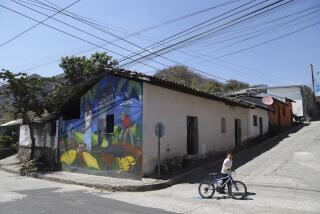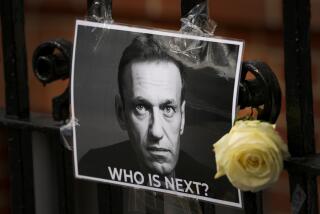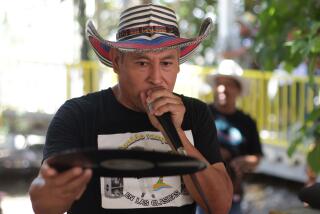How Far ‘Informal Groups’ Can Go Will Tell Us a Lot About Perestroika
- Share via
LONDON — If you wanted to know how seriously to take perestroika in the Soviet Union, you should watch the fate of the so-called “informal groups” that have come into prominence recently in many large cities. Some of the Moscow ones have been particularly in the news in the last weeks as they have held meetings protesting the dismissal of Boris Yeltsin as the first secretary of the city party organization.
These groups are the most striking novelty of the Mikhail S. Gorbachev era. If one looks back to the previous “thaw,” under Nikita S. Khrushchev 25 years ago, one finds few signs of such independent activity. Yet in the last year or so seminars, study groups and informal political clubs have sprung up “like mushrooms after rain,” to quote a Russian expression. Or perhaps it would be more accurate to say that they have come into the open, since some of them have existed for years. Some of these groups were formed to play rock music, read poetry or exhibit unofficial art. Others have focused on fields of learning ignored or distorted by Soviet educational institutions--like church history, theology or Eastern philosophy. Yet others have taken up civic causes like the preservation of historic buildings and the prevention of environmental pollution.
In one sense these groups, although they appear fragile, have deep roots within society in the Soviet Union. They spring from its fastest-growing stratum, the professional intelligentsia, which since Khrushchev’s time has doubled or even tripled in size. They exist because so many members of that intelligentsia have become discontented with the meager intellectual and cultural diet doled out to them by the authorities. They have been concerned about the degradation of the environment and the demoralization and corruption rampant among their fellow citizens, and they have wanted to preserve small islands of integrity and genuine intellectual inquiry or artistic experiment. This they have managed to do--sometimes unknown to the authorities, sometimes with their passive consent.
Only during the past year or so have they, or at least some of them, made their presence more widely known. They have done so in order to take a public stance in favor of Gorbachev’s reform program and to put into practice what he has preached: “If we do not succeed in drawing the people into the cause of perestroika , then the whole thing will fail.” To campaign effectively, however, the unofficial groups need three things: closer contact with each other, for mutual support and information; publicity, so that the Soviet (and Western) public should know of their activities, and a recognized legal status. Only under all three conditions can they be confident of outlasting storms such as might result, for example, from the ousting of Yeltsin.
In their own way they have been trying to achieve these three prerequisites. A number of the groups have started issuing their own periodicals--the most notable example of which, Glasnost, has shrewdly borrowed its title from Gorbachev himself. The aim of its editor, Sergei Grigoriants, is to publish material reflecting the activities of informal groups not appearing in the Soviet press. He intended to have his journal published openly, unlike the Samizdat of the 1960s and ‘70s, so that he could reach a wide public audience. The State Committee for Publishing decided otherwise, however, and refused him legal registration. Consequently he has had to resort to the primitive technology of Samizdat: typewriters and carbon copies, or at best stencils.
Last month the editors of no fewer than 20 similar unofficial publications--some literary, some religious, some civic--met in Leningrad to discuss these and other problems. The oldest periodical had been going for 15 years and had survived 66 issues; the youngest had only just brought out its first number. Together the editors issued a statement announcing the establishment of a “journal of journals” and requesting registration under the recent law on cooperative ventures. This would give them full legal standing, and would open the way for them to acquire or have access to upper reproduction facilities, without which a journal must remain confined to a mere handful of readers.
The signs are not encouraging. The fall of Yeltsin has removed a powerful protector. Even before then, bureaucratic inertia and even active ill-will were making life difficult for the informal group. At the beginning of October, two editors of Glasnost were detained and an issue of the journal was confiscated. Participants in such informal meetings have found themselves increasingly being asked to sign attendance lists on their arrival. Sometimes the police intervene to close a meeting that they think might be subversive.
The continued existence of these groups is a strong argument for taking the recent changes in the Soviet Union seriously. Uncensored publication of their deliberations would be an even stronger one. Conversely, if they are to be harassed, we shall have good grounds for suspecting that the fine words of perestroika are empty rhetoric behind which the apparatchiks are ostentatiously rearranging the scenery before settling down to resume their traditional sway.
More to Read
Sign up for Essential California
The most important California stories and recommendations in your inbox every morning.
You may occasionally receive promotional content from the Los Angeles Times.










